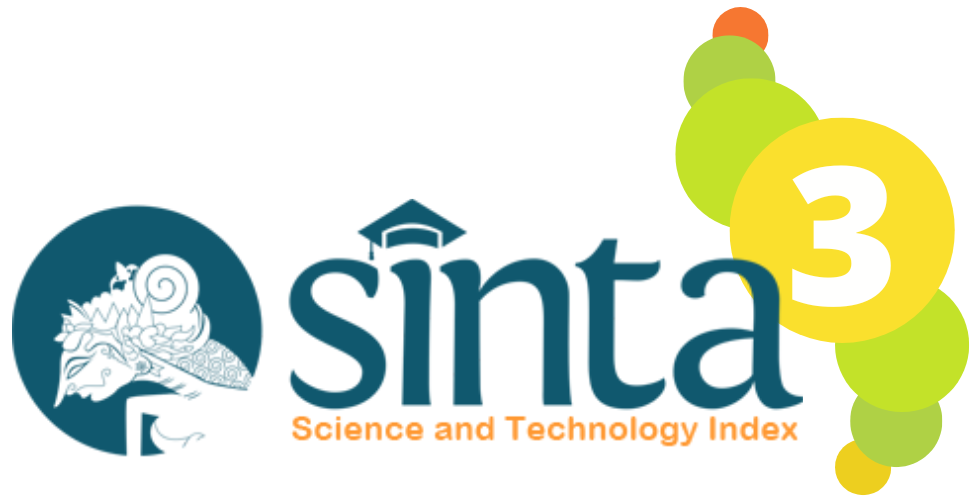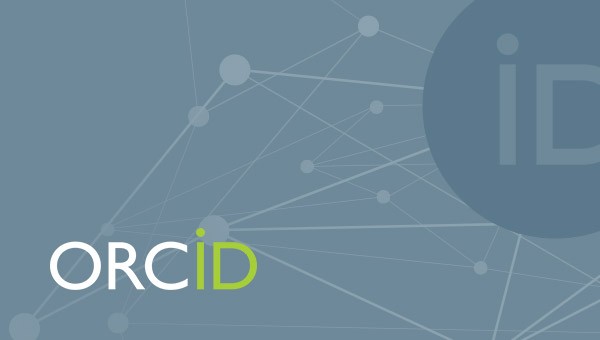The Impact of Adversity Quotient on Students' Problem-Solving Skills Based on Bransford-Stein’s Theory
DOI:
10.29303/jpft.v11i1.8645Published:
2025-05-05Issue:
Vol. 11 No. 1 (2025): January-JuneKeywords:
Problem Solving, Bransford-Stein, Adversity QuotientArticles
Downloads
How to Cite
Downloads
Metrics
Abstract
Problem-solving ability is an important cognitive skill in learning. The aims to analyze students' problem-solving ability based on Bransford-Stein theory by considering the Adversity Quotient (AQ) factor. The research method used is a quantitative method with simple linear regression analysis. Data were collected through problem-solving tests and administering adversity quotient (AQ) questionnaires. The sample was selected using the purposive sampling technique and obtained 100 high school students selected based on different AQ categories (climbers, campers, quitters). The results of the simple linear regression analysis showed that AQ had a significant effect on the level of students' problem-solving ability. Each increase in one unit of AQ will increase the problem solviing by 1,867 units. The R² value is 0.5506, which means that 55.06% of the variability of problem solving ability can be explained by AQ. This shows that students with high AQ tend to be more persistent in solving problems systematically. Reviewed Based on the five Bransford-Stein indicators (IDEAL Problem solving), students with high AQ (climbers) have a better level of problem-solving ability compared to students with medium AQ types (campers) and low AQ types (quitters). Students with the climbers type can solve all five problem-solving indicators in the questions very well. Campers type students have fairly good problem-solving abilities, but can only solve questions up to three Bransford-Stein indicators. Quitter type students can only solve one Bransford-Stein indicator well. The results of this study can provide input for educators in designing appropriate learning strategies, so that they can improve students' problem-solving abilities by considering their psychological factors, especially adversity quotient. This study only examines correlation, without testing causal relationships through experimental interventions.
References
Al’atif, A. M., & Priatna, N. (2023). Analisis Adversity Quotient (AQ) terhadap Kemampuan Komunikasi Matematis Siswa Sekolah Menengah Atas. JIIP-Jurnal Ilmiah Ilmu Pendidikan, 6(3), 2048-2054. DOI: https://doi.org/10.54371/jiip.v6i3.1771
Arifudin, M., Astuti, B., Azizah, N., & Ulwiyah, S. A. (2024). The Relationship between Spirituality Character Strength and Growth Mindset of Islamic Boarding School Students. Library of Progress-Library Science, Information Technology & Computer, 44(3).
Asrul, Ananda, R., Rosnita. (2015). Evaluasi Pembelajaran. Bandung: Ciptapustaka Media
Cynthia, R. E., & Sihotang, H. (2023). Melangkah bersama di era digital: pentingnya literasi digital untuk meningkatkan kemampuan berpikir kritis dan kemampuan pemecahan masalah peserta didik. Jurnal Pendidikan Tambusai, 7(3), 31712-31723.
Farah, M., Suharsono, Y., & Prasetyaningrum, S. (2019). Konsep diri dengan regulasi diri dalam belajar pada siswa SMA. Jurnal Ilmiah Psikologi Terapan, 7(2), 171-183. DOI: https://doi.org/10.22219/jipt.v7i2.8243
Gaffar, A., Mahmud, R. S., Satriani, S., Halim, S. N. H., & Marup, M. (2021). Proses berpikir matematika siswa tipe climber dan tipe camper berdasarkan langkah bransford Stein. Delta-Pi: Jurnal Matematika dan Pendidikan Matematika, 10(2), 254-268.. DOI: https://doi.org/10.33387/dpi.v10i2.3254
Hilal, S., & Rumbiak, J. E. R. (2022). Self Efficacy, Adversity Quotient, Dan Kreativitas Terhadap Hasil Belajar Fisika. Jurnal Pendidikan Ilmu Pengetahuan Alam (JP-IPA), 3(1), 1-10. DOI: https://doi.org/10.56842/jp-ipa.v3i1.98
Juniartina, P. P., & Erlina, N. (2024). Analisis Kemampuan Pemecahan Masalah Mahasiswa dalam Mata Kuliah Fisika Dasar Prodi S1 Pendidikan IPA. Jurnal Pendidikan dan Pembelajaran Sains Indonesia (JPPSI), 7(1), 79-86. DOI: https://doi.org/10.35580/ipaterpadu.v7i2.48487
Khoiruddin Matondang, R., Rahman Matondang, A., & Matondang, K. (2022). OMEGA: Jurnal Keilmuan Pendidikan Matematika. (Vol. 1, Issue 1). DOI: https://doi.org/10.47662/jkpm.v1i1.193
Kusumawati, E. D. (2018). Pengaruh Adversity Quotient, Regulasi Diri Dan Efikasi Diri Terhadap Motivasi Berprestasi Siswa Kko Smp Negeri 13 Yogyakarta. Jurnal Pendidikan Agama Islam, 14(1), 131-165. DOI: https://doi.org/10.14421/jpai.2017.141-08
Lestari, I. D., & Juandi, D. Students’ Mathematical Problem Solving (2023). Ability Reviewed from Adversity Quotient: Systematic Literature Review. Journal of Mathematics and Mathematics Education, 13(1), 56-75.
Na'imah, V., Qomaria, N., Munawaroh, F., Yasir, M., & Putera, D. B. R. A. (2022). Proses Berpikir Siswa dalam Memecahkan Masalah pada Materi Tekanan Zat ditinjau dari Adversity Quotient. Natural Science Education Research (NSER), 5(2), 29-49.
Nisrina, N. (2020). Pengaruh minat dan motivasi belajar terhadap kemampuan pemecahan masalah matematik. Alfarisi: Jurnal Pendidikan MIPA, 1(3).
Pebriana, P., Kamid, K., & Hariyadi, B. (2019). Proses Berpikir Ilmiah Siswa Tipe Climber Dalam Pemecahan Masalah Biologi Di SMA: Scientific Thinking Process of Students Type Climber In Problem Solving of Biology at Junior High School. Edu-Sains: Jurnal Pendidikan Matematika dan Ilmu Pengetahuan Alam, 8(2), 33-41.
Putra, A., & Roza, M. (2020). Systematic Literatur Review: Adversity Quotient dan Self Efficacy dalam Pembelajaran Matematika. At-Tarbawi: Jurnal Pendidikan, Sosial dan Kebudayaan, 7(2), 184-201. DOI: https://doi.org/10.32505/tarbawi.v12i2.2065
Putri, A. A., & Juandi, D. (2022). Kemampuan Pemecahan Masalah Matematis Ditinjau dari Self Efficacy: Systematic Literature Review (SLR) di Indonesia. Symmetry: Pasundan Journal of Research in Mathematics Learning and Education, 7(2), 135–147. DOI: https://doi.org/10.23969/symmetry.v7i2.6493
Saharsa, U., Qaddafi, M., & Baharuddin, B. (2018). Efektivitas penerapan model pembelajaran problem based learning berbantuan video based laboratory terhadap peningkatan pemahaman konsep fisika. JPF (Jurnal Pendidikan Fisika) Universitas Islam Negeri Alauddin Makassar, 6(2), 57-64.
Santoso, B., Putri, D. H., & Medriati, R. (2020). Upaya meningkatkan motivasi belajar dan kemampuan pemecahan masalah siswa melalui model problem based learning berbantu alat peraga konsep gerak lurus. Jurnal Kumparan Fisika, 3(1 April), 11-18. DOI: https://doi.org/10.33369/jkf.3.1.11-18
Sahertian, D. P., & Hidayati, S. N. (2022). Analisis keterampilan pemecahan masalah siswa berbantuan artikel socio-scientific issue pada materi energi alternatif. Pensa: E-Jurnal Pendidikan Sains, 10(1), 1-7.
Suhartono, S. (2016). Adversity quotient sebagai acuan guru dalam memberikan soal pemecahan masalah matematika. Jurnal Nasional INOVASI, 18(2), 62-70.
Tamami, F., Rokhmat, J., & Gunada, I. W. (2017). Pengaruh Pendekatan Berpikir Kausalitik Scaffolding Tipe 2a Modifikasi Berbantuan LKS Terhadap Kemampuan Pemecahan Masalah Optik Geometri Dan Kreativitas Siswa Kelas XI SMAN 1 Mataram. Jurnal Pendidikan Fisika dan Teknologi, 3(1), 76-83. DOI: https://doi.org/10.29303/jpft.v3i1.333
Author Biographies
Vina Istiqomah, Universitas Negeri Semarang
Budi Astuti, Universitas Negeri Semarang
Sugianto Sugianto, State University of Semarang
Physics Education Study Program
License
Copyright (c) 2025 Vina Istiqomah, Budi Astuti, Sugiyanto Sugiyanto

This work is licensed under a Creative Commons Attribution-ShareAlike 4.0 International License.
Authors who publish with Jurnal Pendidikan Fisika dan Teknologi (JPFT) agree to the following terms:
- Authors retain copyright and grant the journal right of first publication with the work simultaneously licensed under a Creative Commons Attribution License 4.0 International License (CC-BY-SA License). This license allows authors to use all articles, data sets, graphics, and appendices in data mining applications, search engines, web sites, blogs, and other platforms by providing an appropriate reference. The journal allows the author(s) to hold the copyright without restrictions and will retain publishing rights without restrictions.
- Authors are able to enter into separate, additional contractual arrangements for the non-exclusive distribution of the journal's published version of the work (e.g., post it to an institutional repository or publish it in a book), with an acknowledgement of its initial publication in Jurnal Pendidikan Fisika dan Teknologi (JPFT).
- Authors are permitted and encouraged to post their work online (e.g., in institutional repositories or on their website) prior to and during the submission process, as it can lead to productive exchanges, as well as earlier and greater citation of published work (See The Effect of Open Access).










